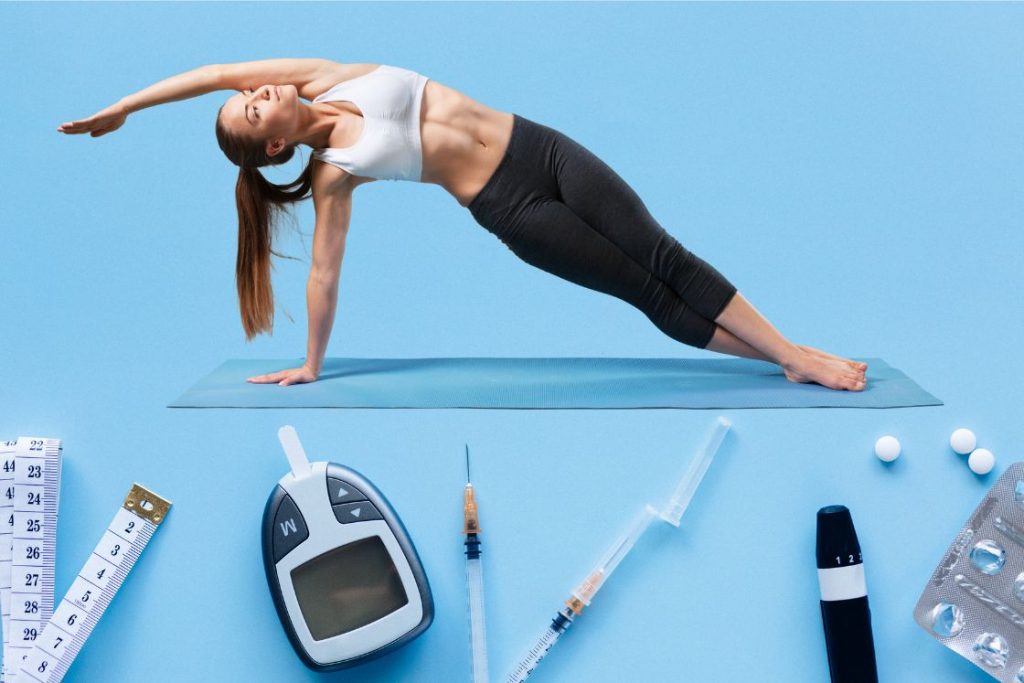
Diabetes, although still a chronic and difficult condition, is no more an ailment to be afraid of. In 21st century diabetes management has become a worry free task. Over the last few decades medical and fitness professionals have worked tirelessly in solving the puzzle of diabetes.
In simplest terms diabetes is a condition, in which your body ( pancreas ) produces either insufficient or excess insulin. This insulin is responsible for the absorption of glucose from your bloodstream by muscles, fat and liver.
As one can imagine, excess insulin causes over-utilization of blood glucose, resulting in low blood sugar. Whereas, insufficient insulin production causes under-utilization of blood glucose, resulting in high blood sugar. There are obviously other factors like stress and obesity that further aggravate these conditions.
You can now keep track of your diabetes, constantly with live and portable glucose level monitoring systems. These digital systems give you constant updates on your sugar levels. Rest assured, you will never be caught off guard by a diabetic attack.
Next we have the advancements in exercises, that are a necessary part of the management processes. There has been enough research on exercises like yoga to establish their impact on diabetes. Fortunately, enough yoga has consistently proved effective in insulin regulation and diabetic symptoms management.
And finally we have the medication and nutrition, which too, have significantly developed in recent years. Managing diabetes, with successful implementation of monitoring, yoga, medication and nutrition, is now a simple process.
Understanding Diabetes and Yoga
Diabetes has two types, type 1 and type 2. Type I diabetes is mostly an immunity disorder where the immune cells kill insulin producing cells. As a result our body is unable to produce sufficient insulin. Whereas in case of type 2 diabetes, people don’t respond to insulin, as they should.
As one could imagine diabetes is a complex disorder, with multiple elements acting as factors and causes. This is why you can’t have simple tissue building exercises, to manage such a complex disorder.
Every function in our body is the result of three fundamental elements. There is the flow of energy, the flow of oxygen and the movement of tissues. And as such, to manage a chronic disorder one must address all three elements.
Yoga practices do precisely so. When you manage diabetes with yoga, you perform postures for stimulating the insulin producing tissues. You engage in mudras to establish an energy flow that complements the postures. And, you supplement your mudras and postures with Pranayama that regulates your overall oxygen efficiency.
- Yoga Postures
The yoga postures include twists and stretches, of our bones, spine, muscles and ligaments. These ancient techniques of twists and stretches are designed such that they squeeze deep into our body organs.
Yoga postures and movements not only build our overlying muscles, but also stimulate our body organs for optimum performance. This complete multi-layered approach of yoga is what makes it perfect for diabetes management.
- Yoga Mudra
Yoga mudras are formed based on the concept of pressure points in your hands that connect to our brain and body. Different yoga mudras can establish specific energy circuits in our body, which can benefit specific biological functions. These mudras when combined with the postures, will enhance the benefits of the postures.
- Pranayama
Pranayama is known to have a healing effect on almost any ailment you come across. Pranayama controls our oxygen efficiency, respiratory movements and circulatory system, three systems that are responsible for any biological activity in our body. Diabetics will also get benefits like reduced fatigue and reduced stress with Pranayama.
Why a Diabetic will Love Yoga
Now, what you have to understand is that irregular insulin production is a fundamental disorder of the body. It is not caused by a foreign unwanted substance that can be eliminated to cure the condition. Thus, diabetes is something that is traditionally managed, rather than cured, even with medications.
Yoga will benefit diabetics on two different levels, relieving symptoms and managing sugar levels. The most obvious symptoms that diabetics face are fatigue, increased urination, stress, food craving and weight loss.
- Eliminate Fatigue with Yoga
Poor management of blood glucose levels in diabetes lead to fatigue. Yoga, with its many restorative poses can smoothly relieve fatigue, and restore your energy. Yoga can stimulate your pancreatic glands for a better insulin production, and better glucose management.
Yoga can also enhance your cardiovascular functions, digestive functions and blood circulation to give an overall compensation to your fatigue levels. Additionally, certain poses like the child’s pose can be extremely relaxing, especially, when in fatigue. Such poses are also easier to perform even on low energy.
- Better Urinary Control With Yoga
Diabetics have a hard time managing their frequent urine urges. Frequent urination can be a frustrating hindrance, especially in work life. Simple yoga poses like cobbler’s pose can help you work on your kegel muscles and urinary muscles. With improved muscles you will have better control on your urine retention.
- Yoga Breaks the Vicious Circle of Stress
Diabetes is not necessarily caused by stress, but it can aggravate your condition. A stressful situation will release more glucose into your bloodstream and eventually increase your blood sugar level. And if that wasn’t enough, the worries of diabetes management can induce stress, creating a vicious loop.
Yoga can calm your mind and nerves, and help you step out of this vicious loop. Yoga poses like Shvasana have an unparalleled influence on relieving stress. In your entire management process yoga will give you the maximum benefit with stress management.
- Curb Your Craving with Yoga
A diabetic faces food craving, because the cells fail to receive the necessary nutrition. Yoga poses, apart from insulin regulation, can also enhance your digestion and nutrition efficiency, to keep your cells nourished. And if your cells won’t be hungry, you won’t be hungry.
- Resolve Diabetic Obesity with Yoga
Research says that obesity can both increase the risk of developing type 2 diabetes and aggravate an existing one. Different yoga poses can have a great impact on your hormones and metabolism, to check your obesity. Like other intensive exercises, yoga too can directly burn calories for weight loss.
Yoga Poses for Diabetes Management
The yoga poses for diabetes mostly focuses on three key elements. One, inducing a calm, stress free mind; two, establishing rejuvenating rest, and three, stimulating healthy abdominal activities.
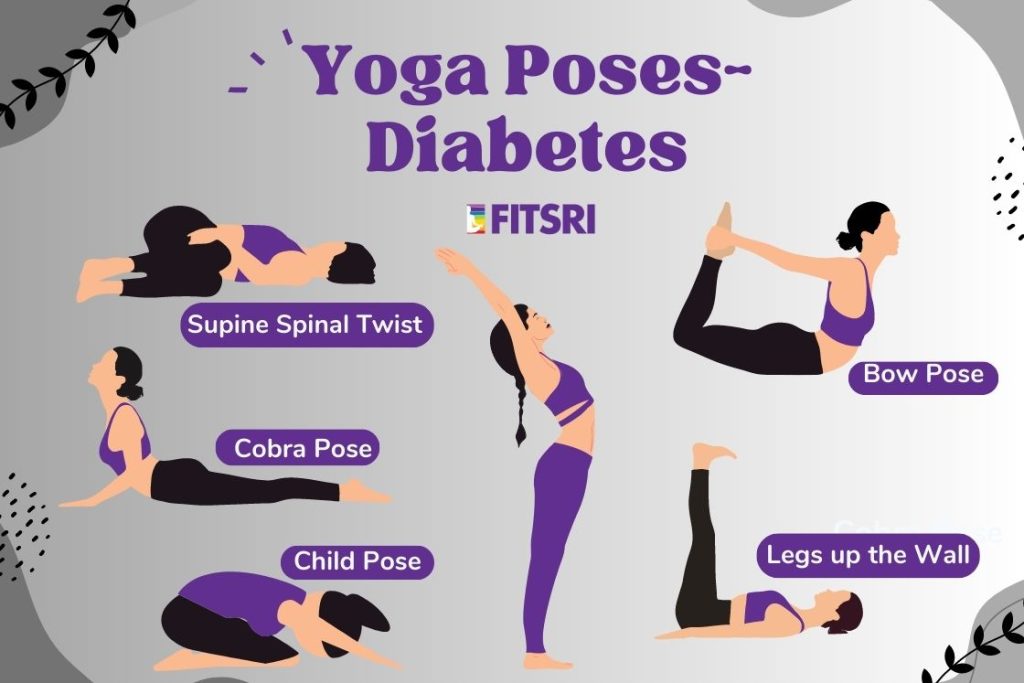
Child’s pose
Child’s pose is a very restorative pose that acts brilliantly to induce rest and relieve stress. The child’s pose can also have digestive benefits as well. A stress free, rested mind and body will always encourage healthy insulin secretion.
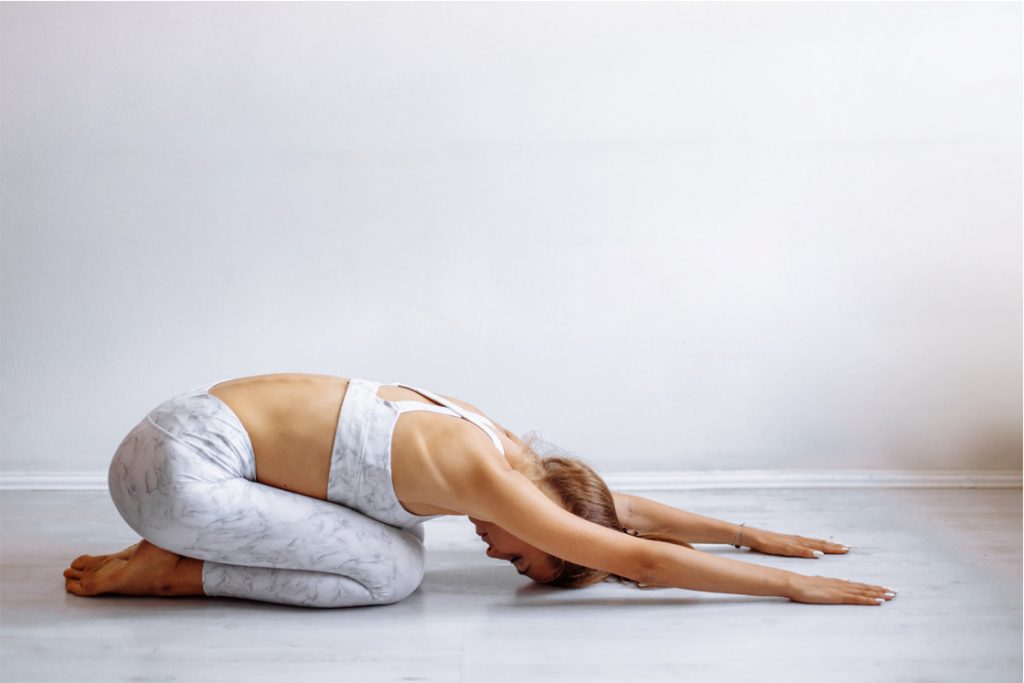
- Sit with your knees folded and joii, on your heels, in Vajrasana.
- Raise your hands straight overhead, and now bend forward and rest your chest on your knees.
- Let your head rest on the ground.
- Extend your lats and reach forward with your hands.
- Take 10 deep breaths, and breathe into your lower back.
- Repeat this pose 3 times.
Note: Open up your knees if it feels more comfortable. Also, you can put your hands behind, by your sides, if that suits you better. Your rest and forward bend is more important to diabetes, over the lat muscles stretch.
Legs up the Wall
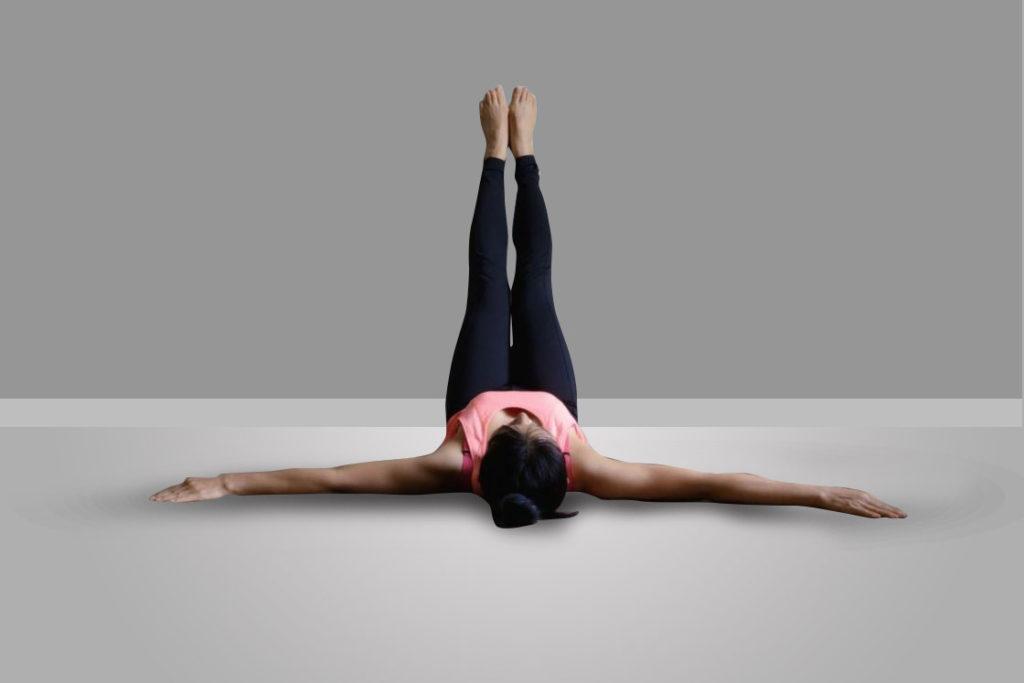
Legs up the wall is the easiest inversion pose. Legs up the wall is also a very calming and stress relieving pose. The inversion of this pose increases the blood flow to your lower abdomen. This will enhance the functions of all abdominal organs, including insulin producing pancreas. Legs up the wall will also help you curb your food cravings.
- Sit next to the wall with your right side of your buttocks against the wall.
- In one smooth motion, roll to your right, over your back and put your legs up the wall.
- Adjust your buttocks to put them as close to the wall as possible.
- Rest in the position for quite sometime preferably 2-3 minutes.
- Try this pose twice a day.
- If your legs start to tingle, gently walk your feet down the wall, fold them and rest for few seconds, and put them back up.
Note: you can try and reach for a supported shoulder stand as well, for which you will need to walk up the wall a bit further, so that you can lift and straighten your hip. Then fold your elbows and support your hips with your hands. Your feet to shoulders should be in one sloping straight line from the wall to the floor.
Supine Spinal Twist
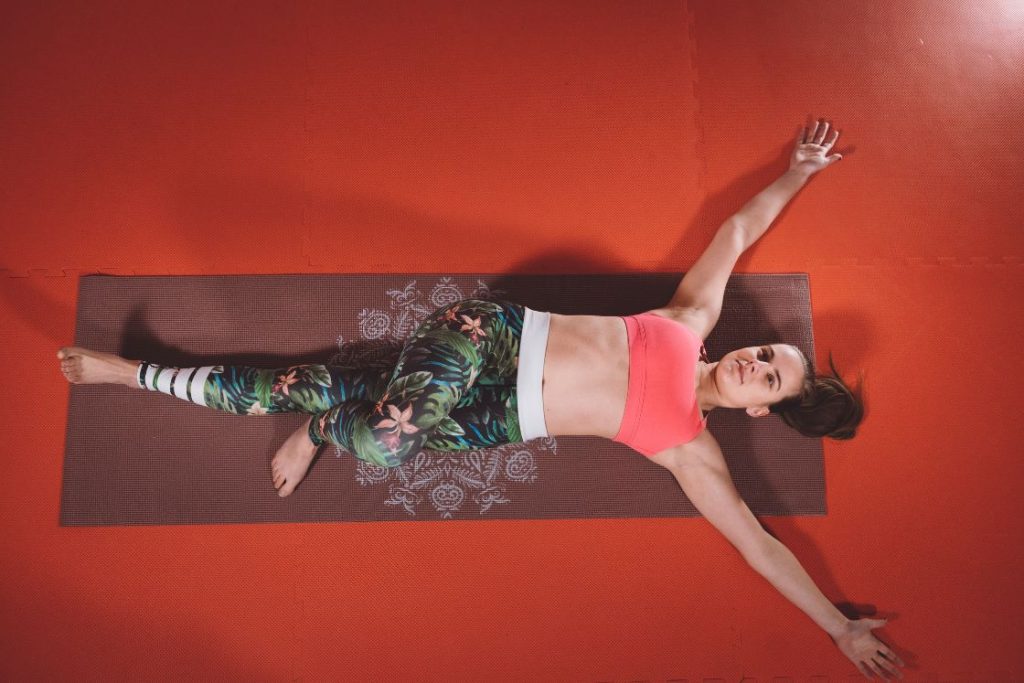
Supine spinal twist is a good pose to boost your insulin secretion. The supine spinal twist, can directly stimulate your pancreas gland, which produces insulin. The supine twist can also give digestive benefits and help you with weight loss.
- Lie supine on the ground
- Spread your hands straight toward the sides of your body, lie supine like a cross.
- Now fold your right knee, and place the heel of your right foot against the outside of your left knee.
- Now with your left hand pull your right knee towards the floor to your left, creating the supine twist in your spine.
- As you create the twist ensure the tour upper body is fixed to the ground.
- Keep your right shoulder blade and hand stretched toward your right.
- Don’t force the twist, pull down your knee gently and patiently.
- Feel your spine twisting vertebrae by vertebrae. As each portion twists, breathe in to open up the next part for twisting.
- After the final twisted position, Hold your pose for 10 breaths and repeat the twist on the other side.
Note: It is not mandatory to keep your right shoulder touched to the ground. As you reach for the ground with your right knee, it will be natural for your right shoulder to lift up slightly to counter the pull. However, be conscious of this pull and maintain the stretch of your right shoulder blade and hand toward your right.
Reclining Bound Angle Pose
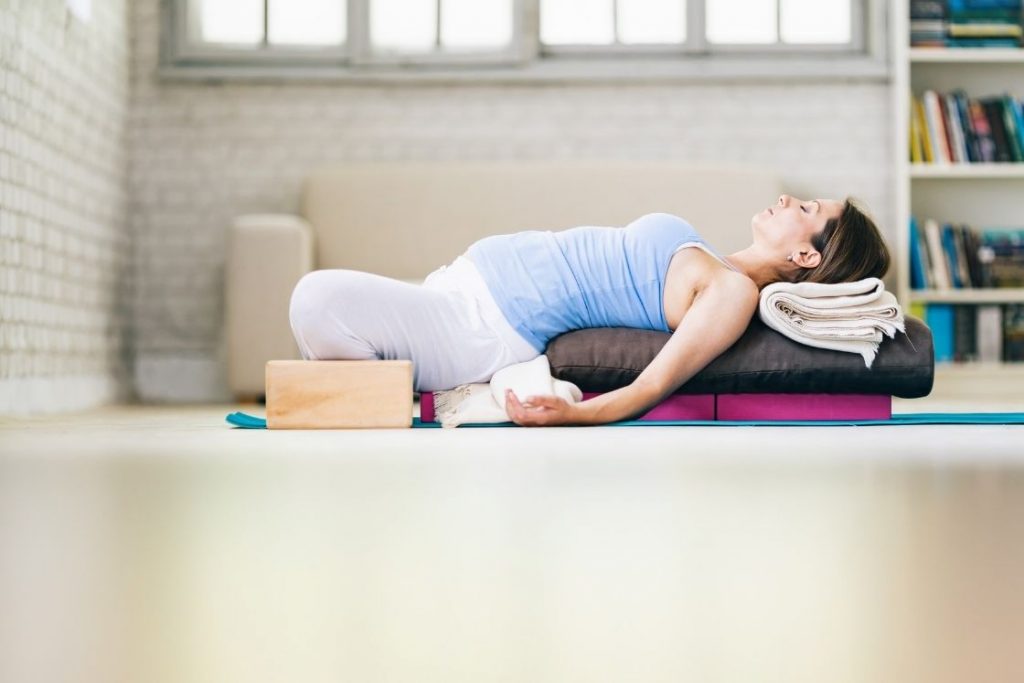
Reclining bound angle pose is what you will need to work on your kegel muscles. This pose will help you regain control over the urge to urinate frequently. Reclining bound angle pose will also help your metabolism and stimulate insulin secretion.
- Sit on the floor in a staff position
- Draw your feet closer to your groin, by bending your knees and touching your soles together.
- Let your knees rest on the floor, on both sides, forming a butterfly posture.
- Hold this pose for a few seconds and then slightly start reclining back.
- Recline back all the way, till your shoulders make contact with the ground.
- Extend your arms out, and completely rest your upper body, whilst your legs are still in butterfly shape.
Note: ideally this pose doesn’t need you to hold your pose before reclining, but doing so will help the pose bring dynamic benefits to your pelvic floor and abdomen, with respect to diabetes.
Yoga Mudras for Diabetes Regulation
The yoga mudras will help you establish an effective circuit of energy flow within your body. These ancient hand gestures, wisely use the pressure points in your hands that influence various parts of your mind and body. When you practice these mudras along with your poses, you will be able to achieve a healing, beyond conventional expectations.
Surya Mudra
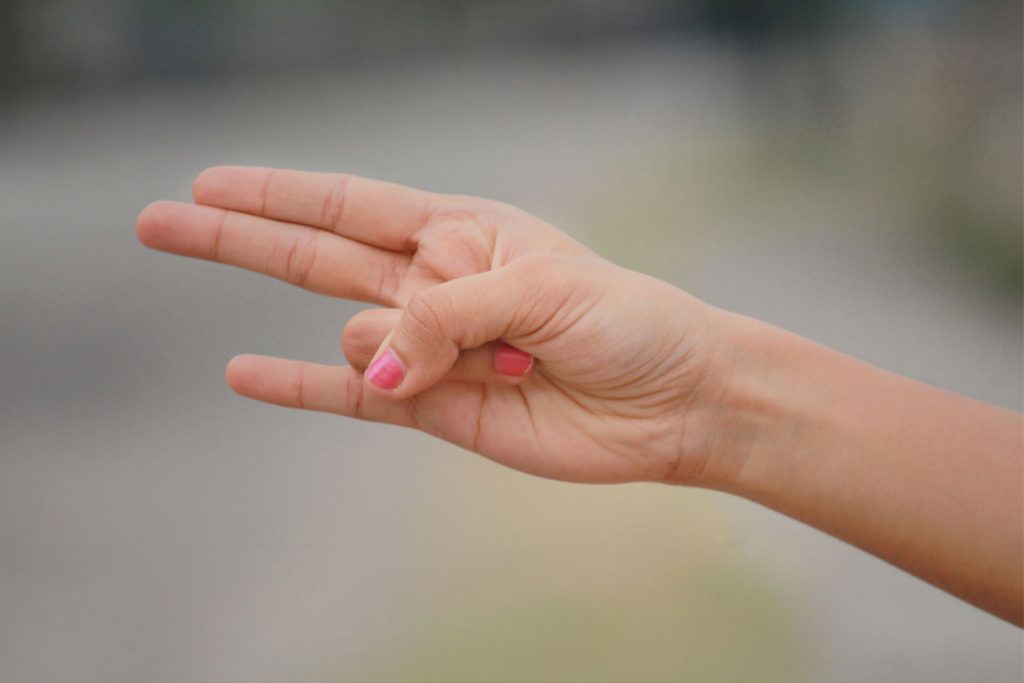
As the name suggests the Surya mudra is the gesture of sun, or heat generation. Heat or warmth is the cradle of life force itself. Thus, the Surya mudra can enhance your overall vitality. In cellular level, Surya mudra’s warmth can benefit each and every cell in your body, including the insulin producing cells. The Surya mudra can also manage obesity associated with diabetes.
- Sit in Vajrasana, rest your hands on your knees.
- Bend your ring finger from the middle joint and touch the base of your thumb.
- Now press your thumb over your bent ring finger, such that the tip of the thumb reaches the point of bent on the ring finger.
- Keep the rest of your fingers straight.
- Do the same gesture with both your hands.
- Practice this hand gesture for an overall 45 minutes.
- At initial stages break it up into three sessions of 15 minutes each.
Note: This gesture generates heat in your body. So you will have to be careful not to practice anything else that increases heat generation in your body. If you must, counter balance it with food that will cool you down a bit.
Prana Mudra
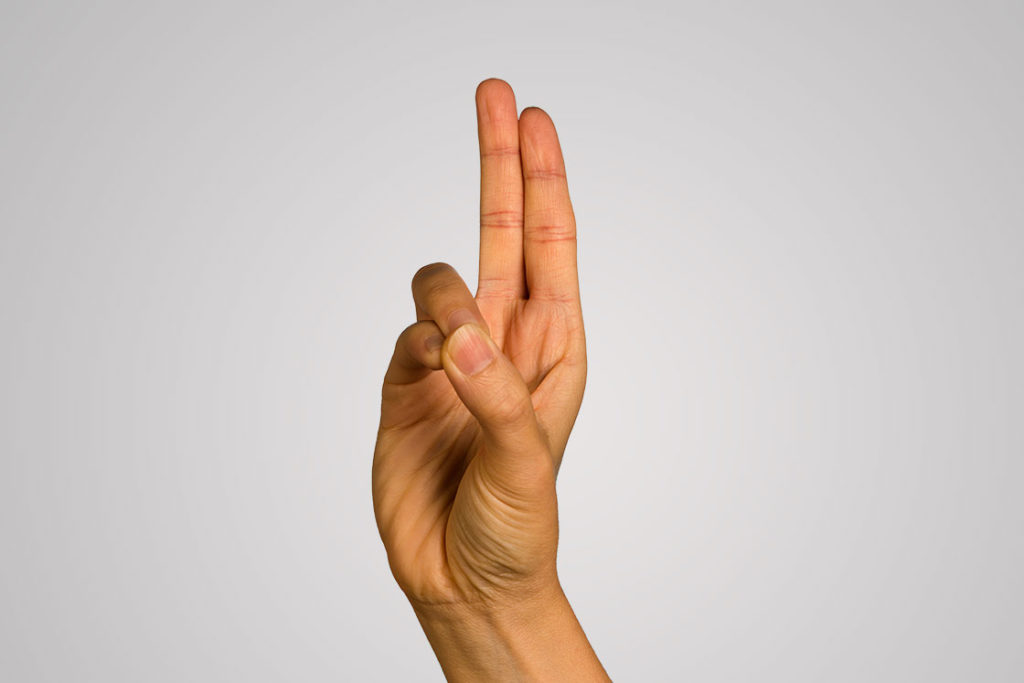
Prana mudra will increase your healing ability. Diabetics are often unable to heal their wounds. Diabetes may even lead to a weak immune system, increasing vulnerability to diseases. Prana mudra takes care of your vitality, healing and boosts your immunity.
- You can do this prana mudra individually or while doing some Other pose.
- You can sit in an easy pose or Vajrasana and practice this mudra. Or, you can practice this gesture while practicing the legs up the wall or reclining bound angle pose.
- If you can separately make time for this pose, the best choice is obviously the easy pose.
- Once in your pose, you need to join your ring finger and little finger, and touch their tip, with the tip of your thumb.
- The gesture should be such, that between these fingers an oval opening is formed
- Keep the other fingers straight.
- Make the gesture in both hands and can practice it for about 30mins to 45 mins per day.
Note: The overall shape of these gestures can vary, but for right results, what is important is that you make proper and complete contact between the tips of all three fingers.
Pranayama Techniques for Diabetes Control

If yoga mudra helps you regulate your life force, Pranayama helps you produce the currency that creates the life force. Among many things, your efficient breathing is integral to your life force and vitality. Regular practicing of Pranayama, will help you tame your diabetes. Pranayama will also significantly bring down fatigue levels, food cravings and stress.
Kapalabhati Pranayama
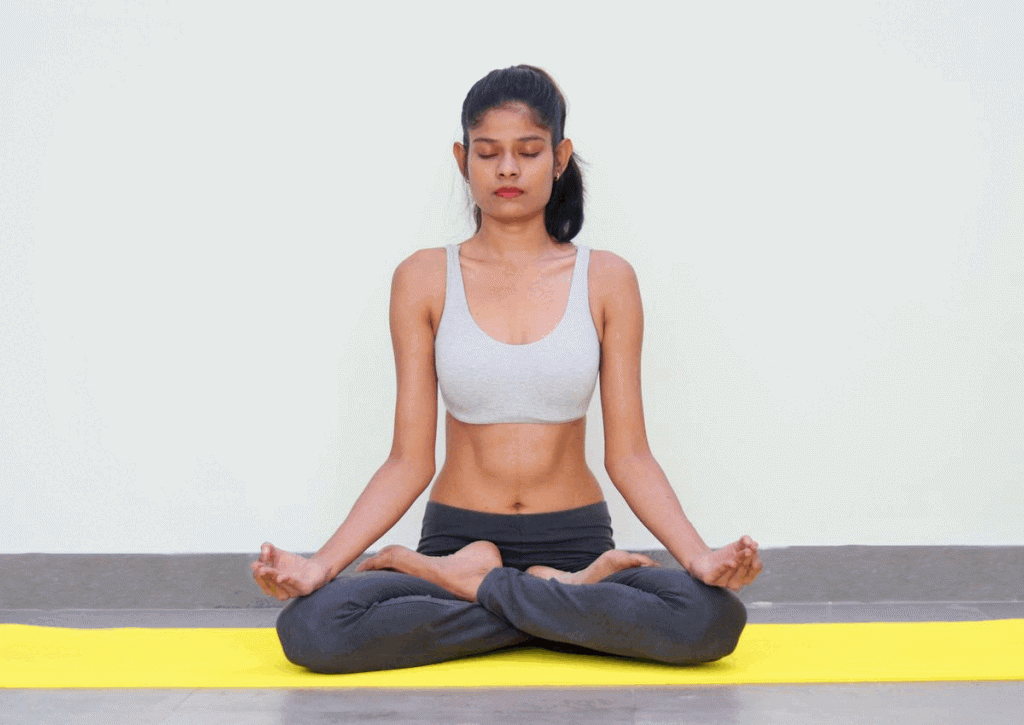
Among all Pranayama practices, Kapalabhati has the maximum benefits to your abdomen. Thus, maximum benefits to your insulin production. Kapalabhati also exercises your respiratory and cardiovascular muscles to enhance air and blood circulation in your body.
- Sit in an easy pose on the floor, or if you have a leg injury, sit on a chair.
- Place one hand on your knees and the other on your belly.
- Take a deep breath in, and then make successive exhaling breath spurts with swift contraction and relaxation of your abs.
- It is ideal to make 20 such exhaling spurts, but if it feels difficult take it slow.
- Your right hand on the belly, is to ensure that your abs are in reality working to make the exhalations.
- Try 5-10 rounds of Kapalabhati.
Note: The exhalation of Kapalabhati is important. The inhalation is not. Consciously focus on the abs contraction for exhaling, and as your abs relax the inhalation will happen naturally.
Bhastrika Pranayama
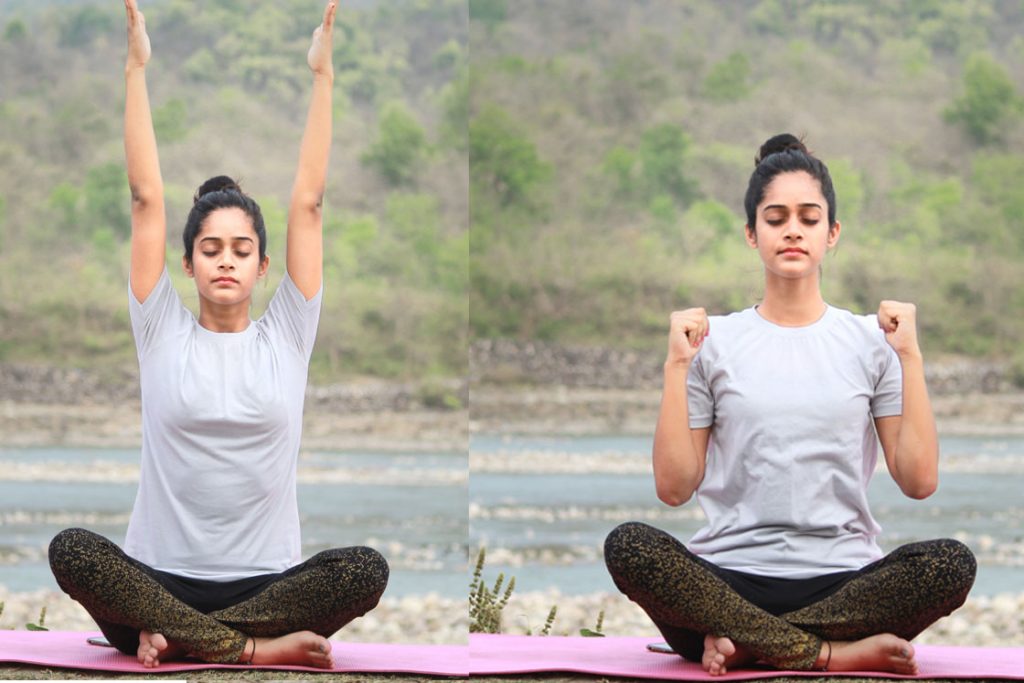
Oxygen is at the base of every chemical reaction that happens in your body, including the ones at the cellular level. Poor oxygen intake can increase free radicals that can interfere with your immune system. Bhastrika Pranayama is nothing but a deep breathing practice that gives your systems an abundance of oxygen. Starting from wound healing, to metabolism to insulin production, all the processes will benefit from the oxygen abundance.
- Sit comfortably in a cross-legged position.
- Breathe in, as deep as you can.
- Feel your abs pushing against your spine, lungs expanding to their maximum, and the air filling you up, till you can’t breathe anymore.
- Breathe in for about 2.5-3 seconds.
- Now exhale the whole air out for 2-3 seconds. You will feel your abs relaxing and lungs collapsing.
- This process will not only flood you with oxygen, but also train your lungs for better oxygen absorption.
Note: In normal breathing we inhale about 500ml of oxygen, whereas in the deep breathing of bhastrika we intake about 5000 – 10000 ml of oxygen
Managing diabetes with yoga practices is not just about exercises. It is much beyond that; a supremely holistic process. Yoga will enhance your vitality, immunity and life force. Yoga will boost the blood and air flow in your body. Yoga will enhance nutrition management, and yoga will stimulate insulin production. The bottom line is with yoga practices you can possibly address every aspect of diabetes.
Conclusion
Incorporating yoga, pranayama, and mudras into a diabetes treatment routine can have significant benefits for physical and mental well-being. These practices offer a holistic approach to diabetes control that addresses various aspects of health and empowers individuals to take control of their own wellness. Remember to consult a physician before beginning any new exercises or breathing practices, especially if you have specific health concerns.




